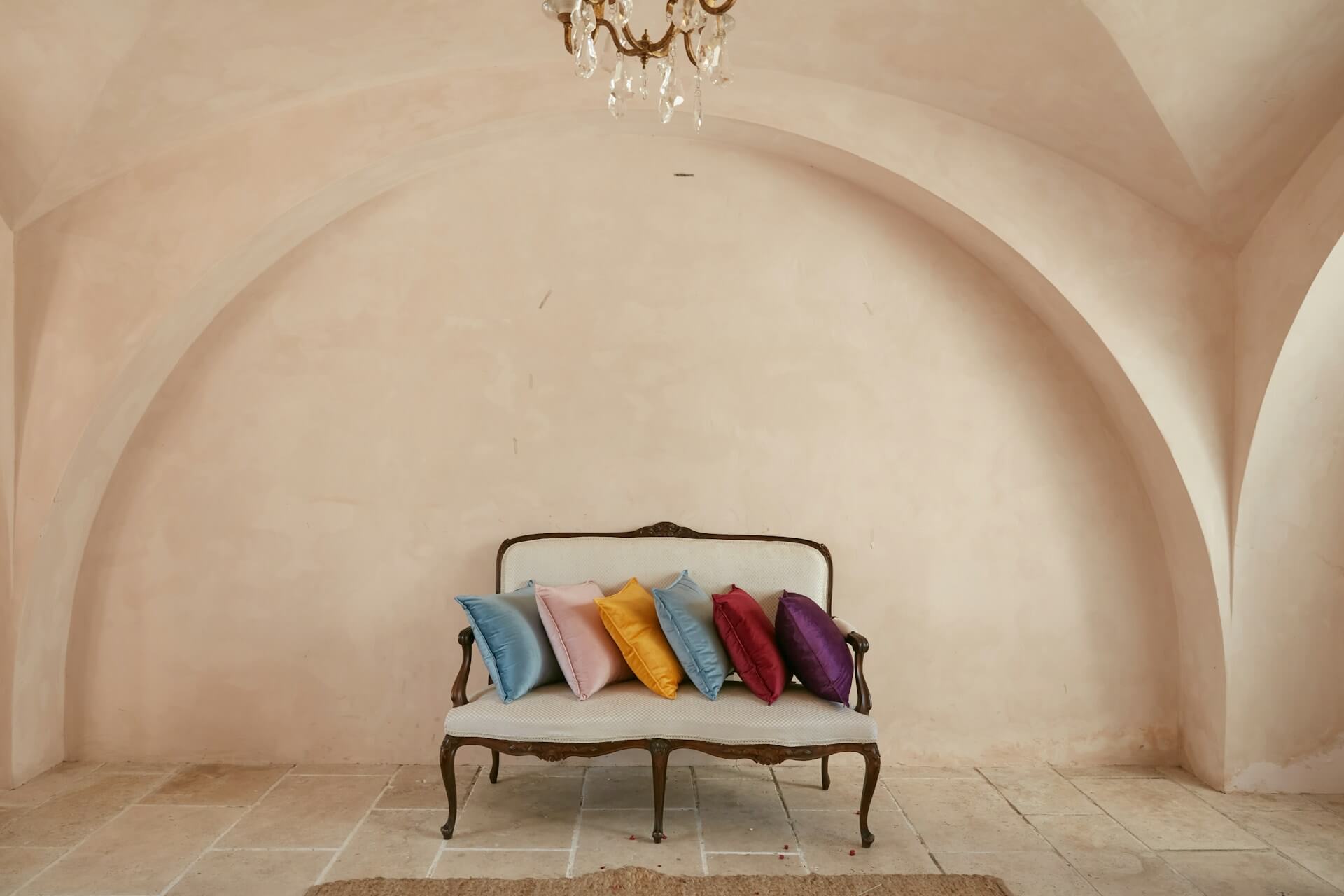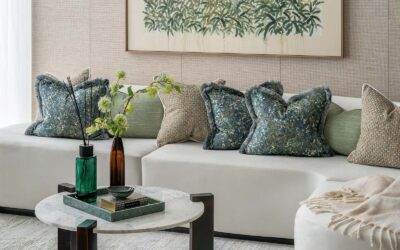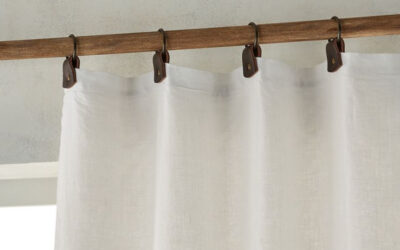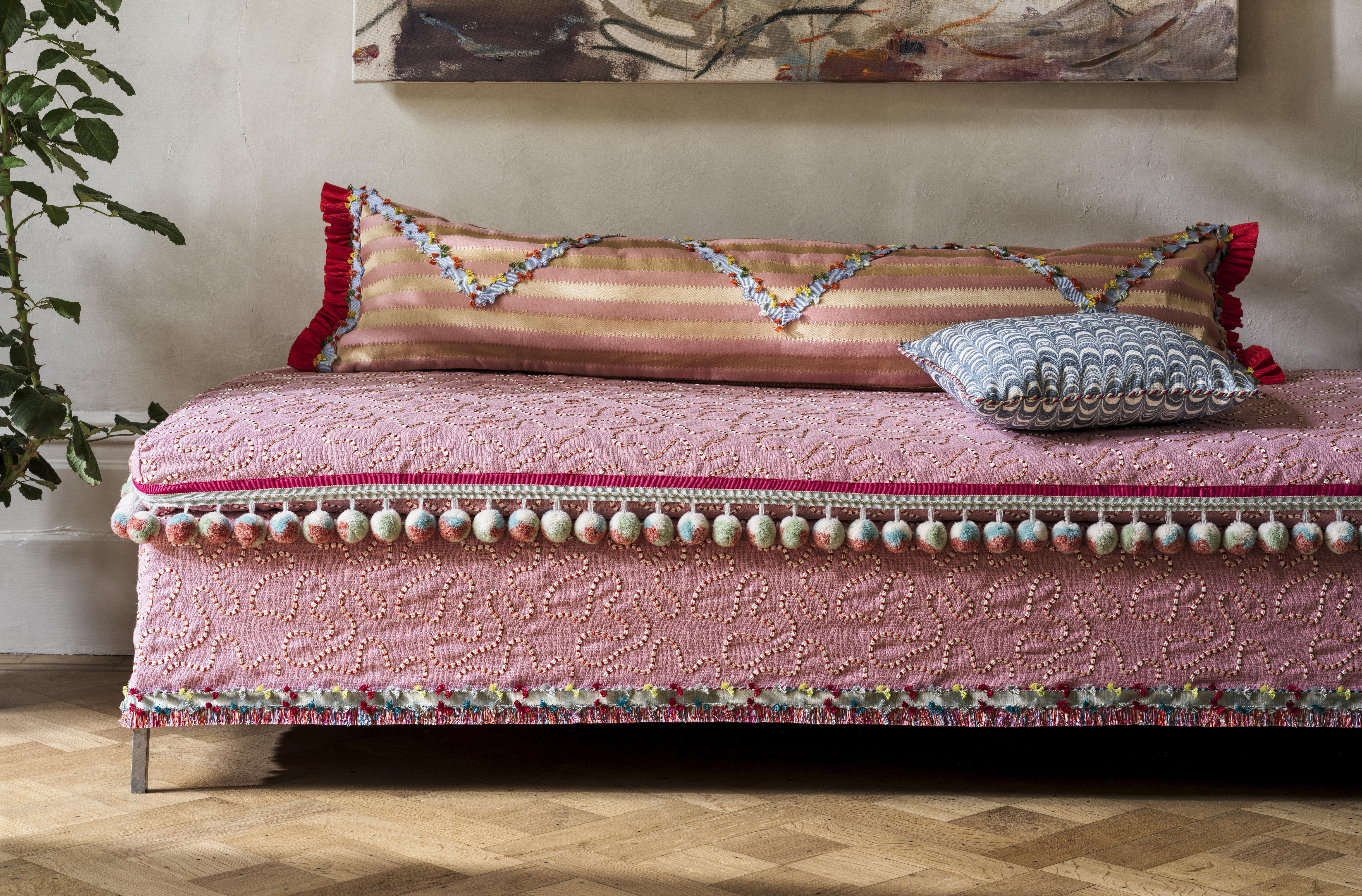Breaking down different styling approaches, from maximalist layering to pared-back elegance.
Cushions are the quiet heroes of any soft furnishings scheme, the pieces that add warmth, texture, and personality to a room without shouting for attention. But when it comes to how many cushions to add, the line between considered styling and overkill can be surprisingly fine.
In this article, we’re unpacking how many cushions is too many. We’ll cover different styling approaches, how cushions work alongside bespoke drapery and upholstery, and share three simple rules to help get the balance right in any room.
Maximalist Layering
This is the lush, layered look where cushions pile up in a mix of sizes, shapes, textures, and trims. It’s tactile and expressive, perfect for spaces with dramatic window treatments – think velvet curtains edged with bullion fringe or wide velvet tape borders. Maximalist cushions are about picking up on the details, creating harmony through repetition.
The key is to balance the rich layering with a consistent colour story, so the look feels intentional, not chaotic. Typically, this means three or four cushions at each end of a large sofa, mixing squares and rectangles, smooth linens with plush velvets, maybe a brushed fringe or piped edge here and there.
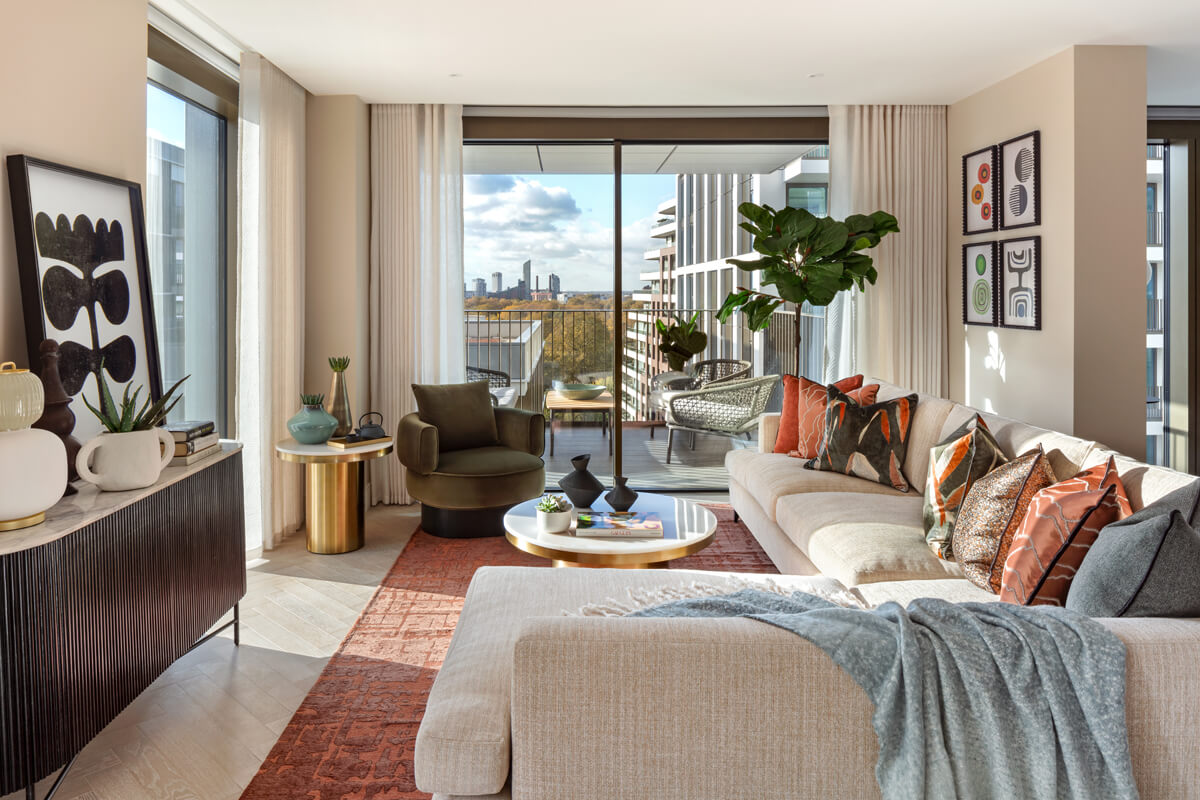
Pared-Back & Purposeful
At the other end of the spectrum is restraint. This style favours fewer cushions, often just one or two, but each one is chosen for its fabric quality, size, and connection to the rest of the scheme.
It works well alongside lighter, airier drapery – think natural linen panels without heavy trims. In these settings, we love larger cushions, made in textured, tonal fabrics, which provide quiet support without clutter.
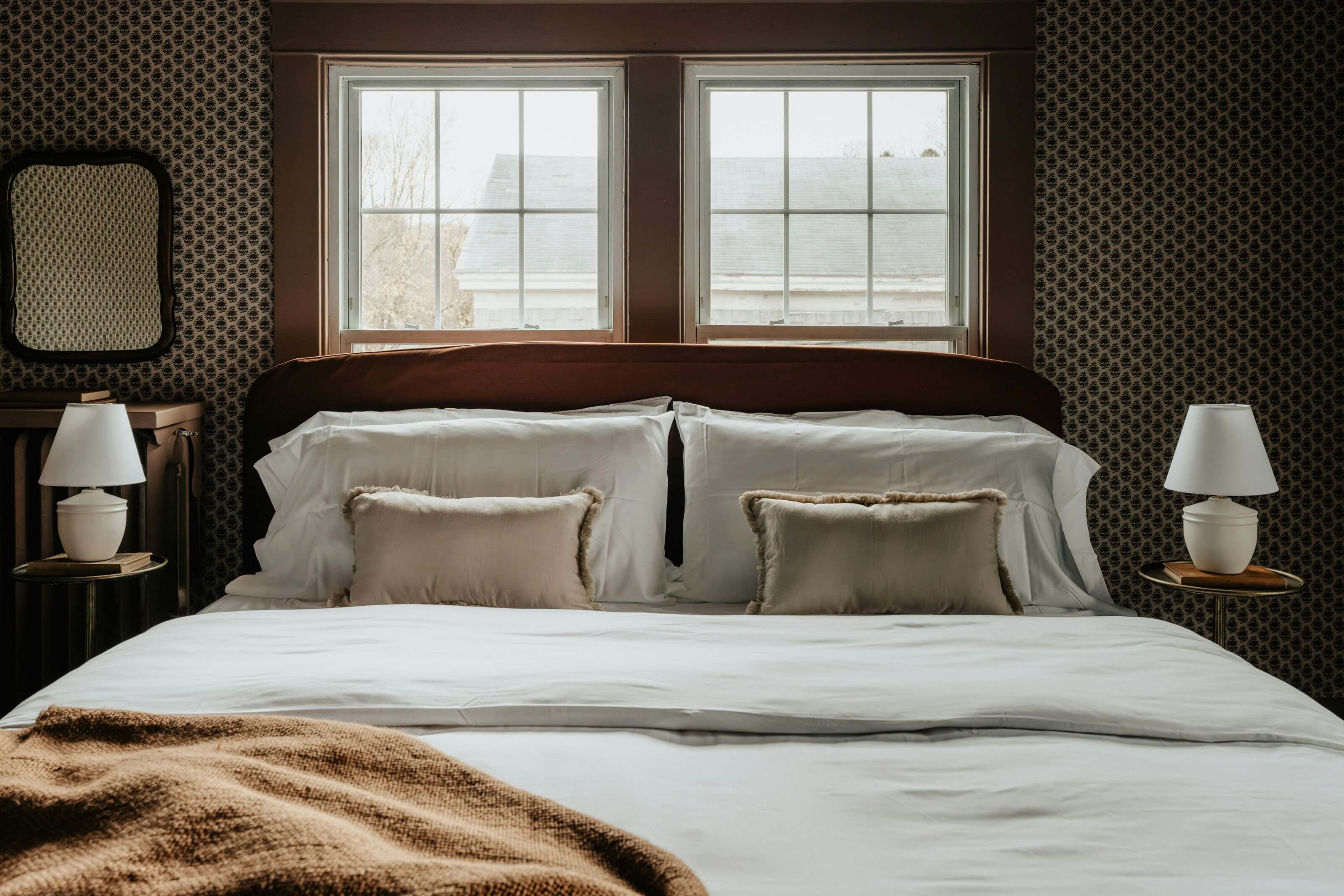
The Balanced Middle Ground
Most interiors land somewhere between these two poles. A pair of cushions on each side of a sofa is classic and effective – mixing a base neutral cushion with one or two accent cushions that echo a colour or trim detail from the curtains or roman blinds.
This is where bespoke soft furnishings really come into their own. Cushions, curtains, blinds – when designed to complement one another, they feel like a curated set, not a random collection.
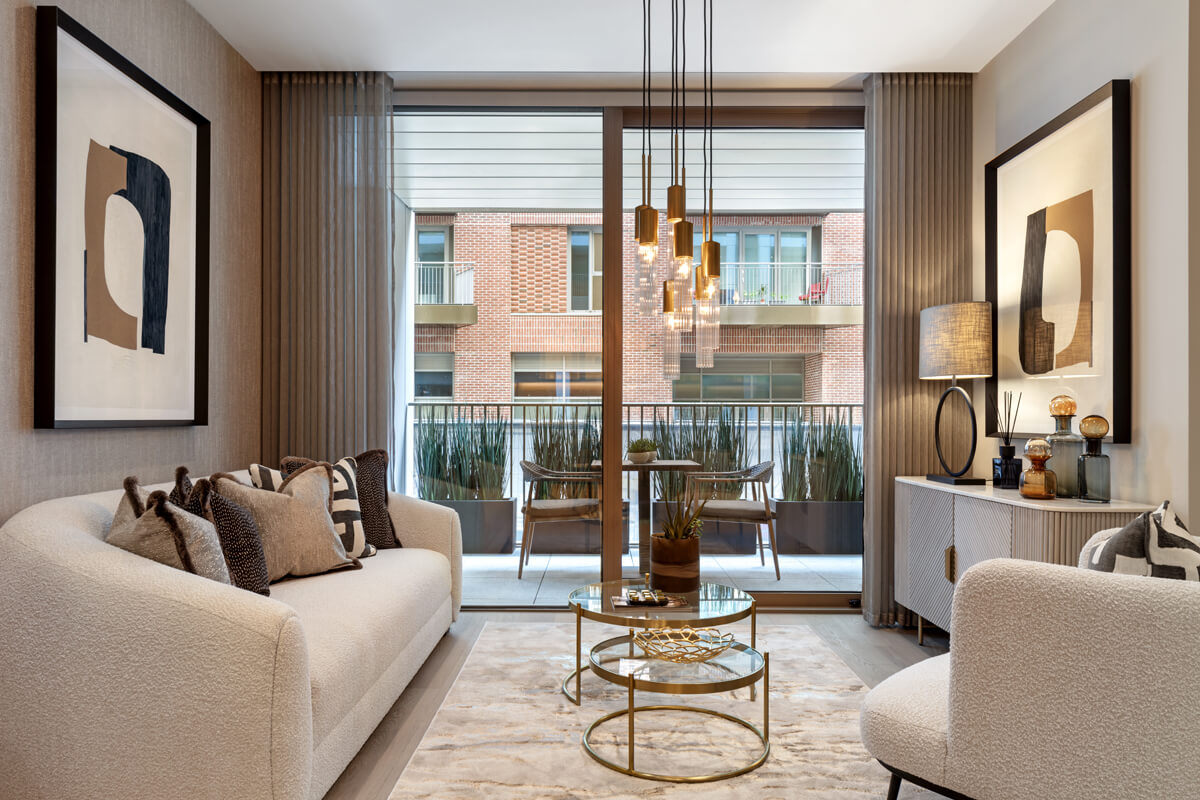
Three Rules to Solve the Cushion Stack Dilemma
- Remember that every cushion should earn its place. Whether it’s carrying colour, repeating a texture, or adding a tactile contrast, each cushion needs a reason to be there. If it doesn’t add to the story, it’s just clutter.
- Think about scale and proportion. Larger cushions can stand alone, smaller cushions work best in groups. And always consider the size of your sofa and room, too many small cushions on a small sofa can feel overcrowded.
- We believe cushions should complement your window treatments, not compete. When your curtains or blinds are richly detailed, keep cushion styling simpler. If the windows are light and sheer, cushions can take on more personality and texture.
The real question isn’t how many cushions you pile on, it’s whether they’re earning their place in the room. Because no matter how many pillows you own, if they’re not playing nicely with your curtains and upholstery, you’re just adding fluff, not finesse. Need help pulling it all together? Our team is always here to advise on cushions, drapery, and everything in between. Contact us here.




